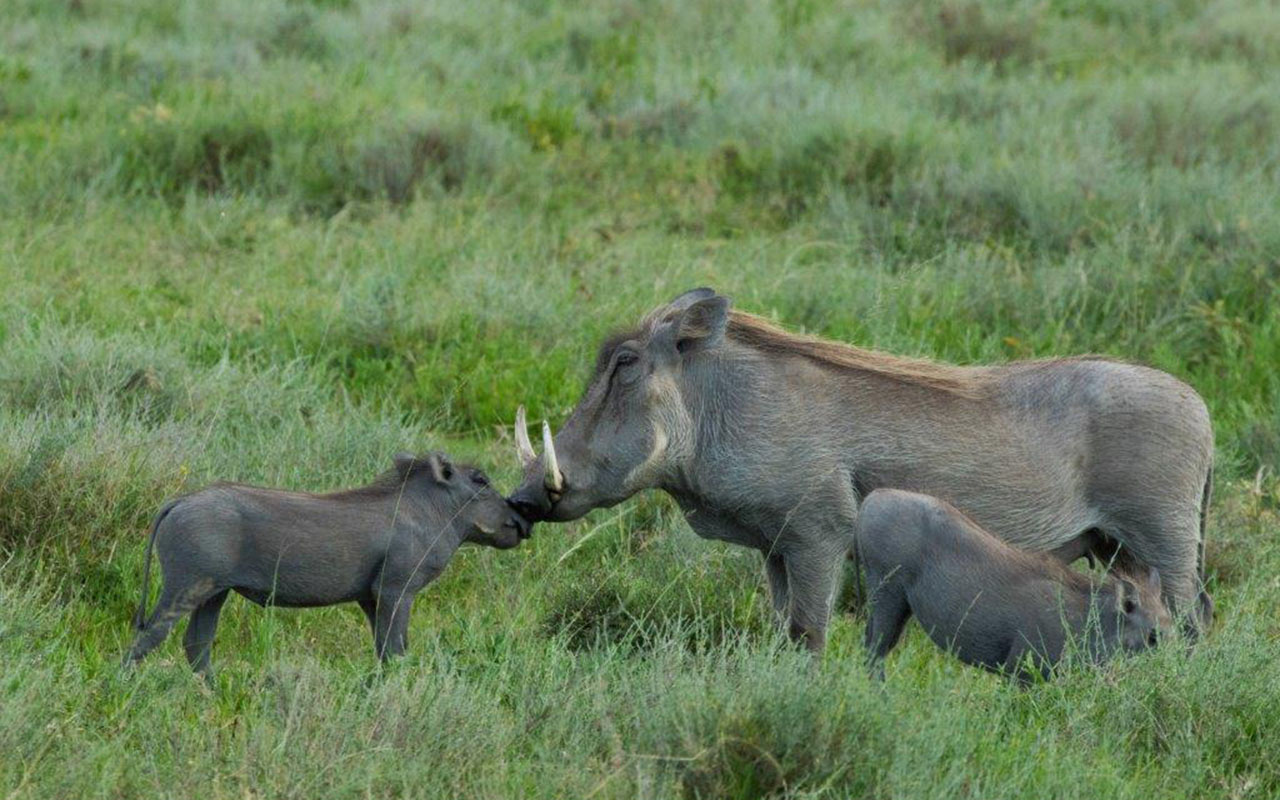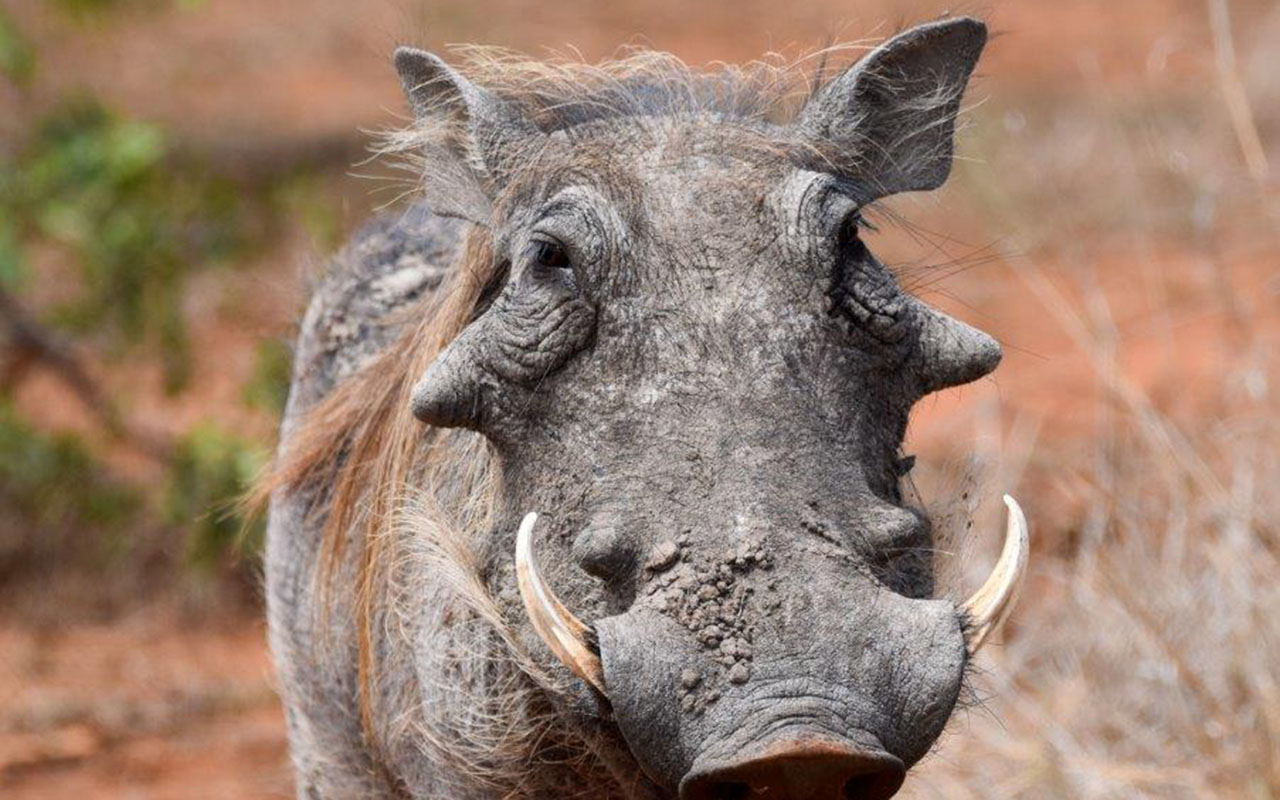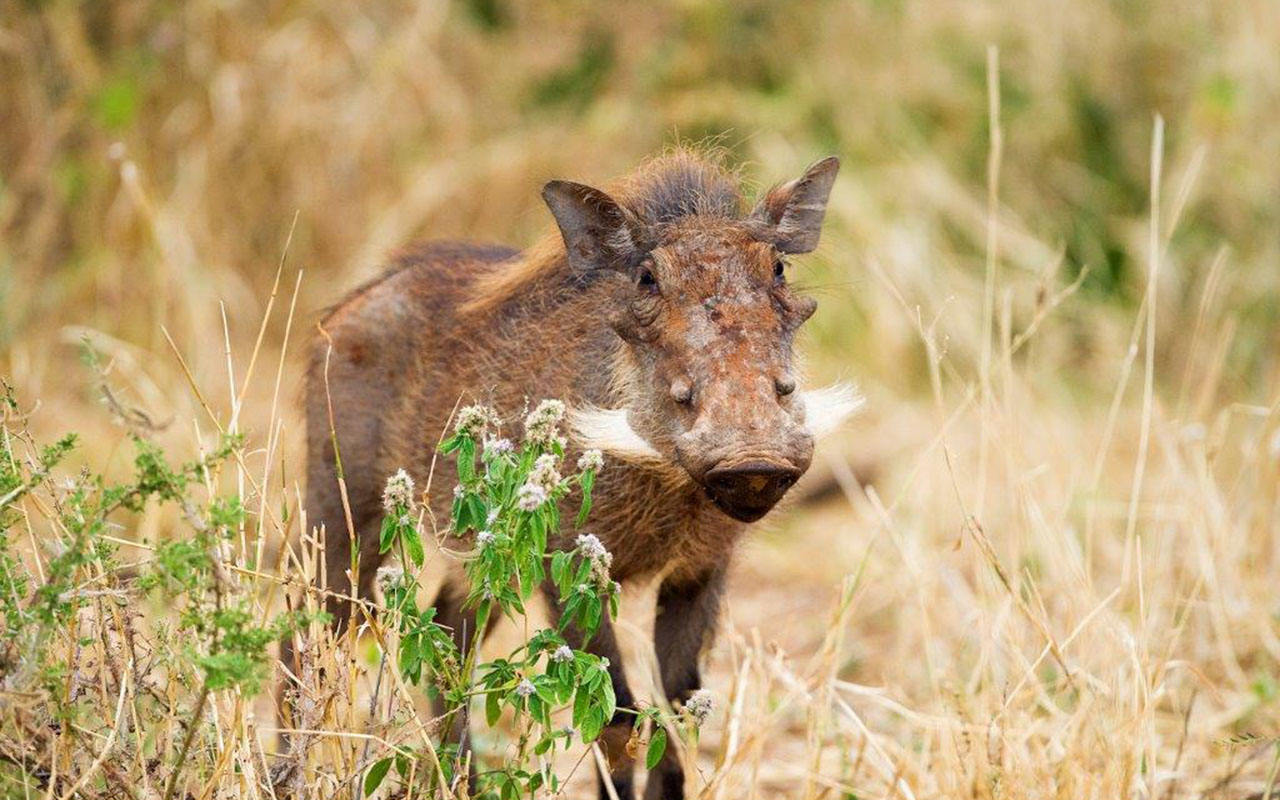Warthog

| Kingdom -> | Animalia |
| Phylum -> | Chordata |
| Class -> | Mammalia |
| Order -> | |
| Family -> | |
| Genus -> | |
| Species -> | . |
The warthog is a wild member of the pig family that is found in grasslands, savannas, and woodlands in sub-Saharan Africa. It is named for the large, wart-like protrusions on its face, which serve as protective padding during fights with other warthogs. Despite their fearsome appearance, warthogs are generally docile and avoid confrontations whenever possible.
Physical Characteristics
Warthogs are large, sturdy animals that can weigh up to 250 kg (550 lbs) and stand up to 75 cm (30 inches) tall at the shoulder. They have a distinctive appearance, with large, curved tusks and long, protruding warts on their face. These warts are actually made of bone and cartilage and help to protect the warthog's head during fights with other animals.
Warthogs are covered in coarse, bristly hair that ranges from brown to gray to black in color. They have a long, tufted tail that they carry upright while running, which helps to signal other warthogs to follow. Warthogs have poor eyesight but a keen sense of smell and hearing, which helps them detect predators and avoid danger.
Behavior
Warthogs are primarily herbivorous, feeding on grasses, roots, bulbs, and tubers. They are known to dig up and eat rhizomes and corms, which can cause damage to crops and gardens. Warthogs are also known to eat carrion and will scavenge for food when necessary.
Warthogs are social animals and live in groups called sounders, which can include up to 40 individuals. Sounders are usually led by a dominant male, who will defend the group against predators and other threats. Young males leave the group when they reach sexual maturity and either join other males in bachelor groups or form their own sounders.
Conservation
Warthogs are not currently considered to be endangered, but some populations have experienced declines due to habitat loss and hunting. Warthogs are hunted for their meat and tusks, and their habitat is being lost to agriculture, urbanization, and other human activities.
Efforts are underway to protect warthogs and their habitats through conservation programs and education initiatives. By raising awareness of the importance of maintaining healthy ecosystems and protecting wildlife, conservationists hope to ensure the survival of these unique and fascinating animals for future generations to enjoy.

